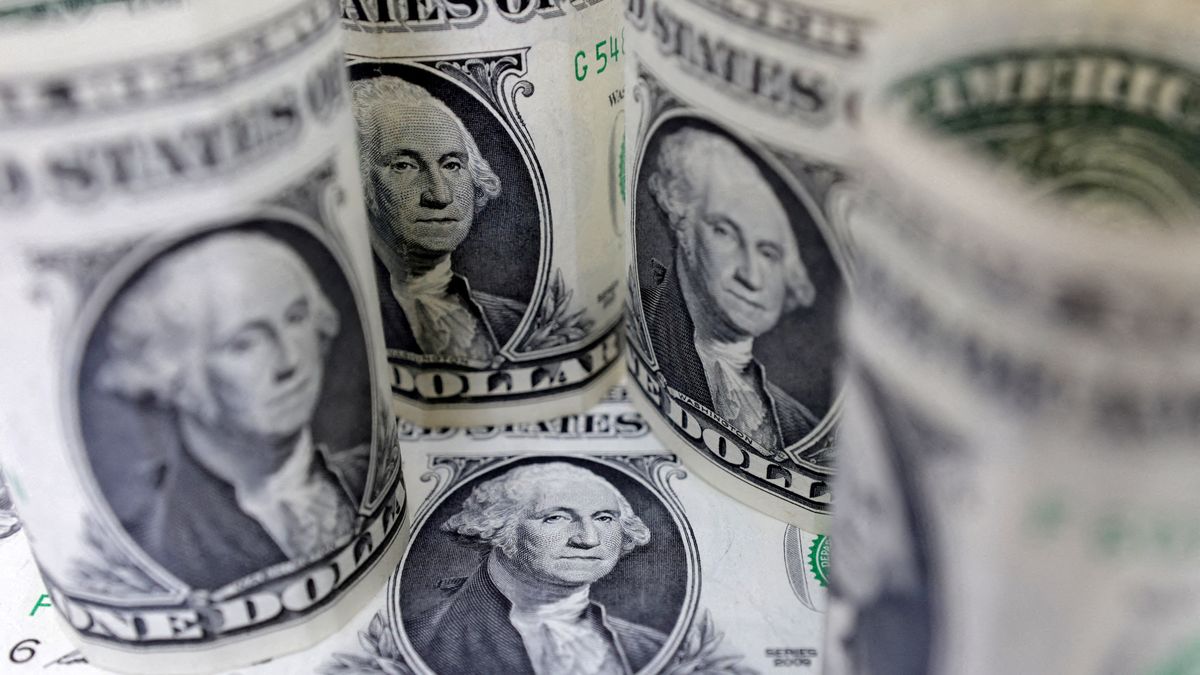He Financial Times, perhaps the most influential newspaper in the financial world, did it again. Just a few hours ago, in an article by his local correspondent, he calibrated the IMF statement on Argentina, pointing out in its first paragraph that, for now, and speaking of the dollar, there is no money.
In that context, The FT asked Pablo Quirno, Secretary of Finance, about this situation, to which the official replied that Argentina and the IMF have begun to discuss a new agreement and that the country is not talking to the organization “from a position of necessity.” ” of dollars…. Along these lines, it is valid to cite the other source that the FT consults, Sebastián Menescaldi, associate director of the consulting firm EcoGocradle and umbilical link of the economic team (Furiase-Vauthier) of the Minister Luis Toto Caputo. EcoGo says: “A new agreement with the IMF will come after the 2025 midterm elections, when a favorable result (from Milei) will act as a springboard to implement the structural reforms requested by the IMF.”
The IMF’s little favor: Kristalina, do you have an email?
The IMF statement generated a lot of expectations. AND There is a little gem related to the “coin competition”. The organism He highlighted that Argentina met the goals of reducing the fiscal deficit and purchasing reserves from the Central Bank and that, for that reason, it was not necessary to request a waiver (forgiveness) intended to obtain the June disbursement.. And that “based on better than expected results, the IMF technical staff and the Argentine authorities reached an understanding on the policies to continue strengthening the disinflation process, reconstitute international reserves, support the recovery and maintain the program firmly on track.”
However, what stood out the most was the mention of the “currency competition.” This was so for an obvious reason: it was not the IMF that was the author of the mention, but rather the Government itself, in charge of writing the statement to the organization. Thus it is understood that, within the framework of the statement, there is talk of “transition towards a new monetary regime (which involves currency competition)”. And thus we also understand other mentions “of a partisan political nature” that the organization curiously included in the statement such as “inheritance”, “faster than expected”, “the first quarterly fiscal surplus in 16 years”, “the rapid fall of inflation” and “the change in trend of international reserves”.
But of course, the thread fully appeared in this paragraph that was supposedly written Kristalina Gerogieva and her team: “In parallel, and in a context of a contraction in economic activity that began at the end of 2023, the authorities have made significant efforts to expand social assistance to vulnerable mothers and children, as well as protect the purchasing power of pensions. Progress continues in expanding political and social support for these efforts and in the fight against entrenched interests.”
Giacomini’s dogs: the economic plan hypothesis
The Government works on expectations above the rest of the variables. It helps to understand the ghost hand, the ghost writer, in the IMF statement. But also other things. He pointed it out economist Diego Giacominiwho knows the president like few others, who published an interesting hypothesis about the two mastiffs: The current disinflationary monetary plan is a mixture of two different aspects of the Chicago school and both work on the same thing, the expectation: 1) Milton Friedman’s model with adaptive expectations and 2) Robert Lucas Jr.’s model with rational expectations that had been originally developed by John Muth (1961). Superimposing the two theories, Giacomini predicts an outcome with ellipses: “a government with reputation, credibility and a consistent economic plan quickly convinces the public that inflation will fall and as a consequence, inflation expectations plummet and inflation falls hard and fast.
If this happens, the Government does not need to strongly collapse the real economy to lower inflation. On the contrary, the current government has to plummet the rate of product growth and increase unemployment, because it has a credibility problem that prevents inflation expectations from collapsing and, therefore, inflation cannot fall quickly and strongly. ”.
There are no dollars: backwardness and a trip to the lack of savings of the middle class
The whole is embedded in the “quadrant” of the funding that President Milei needs to lift the stocks or, in any case, to not face the pressures derived from the virtual tendency towards exchange rate delays that could be generated from now on.
Although much has been written, it is worth remembering one of the many inconsistencies that has been taking place in the scheme proposed by the president: the bet on a reduction in the interest rate with the exchange rate anchor of the BCRA, that is, the super blender that Milei launched a few months ago and that received a new reset this week. For some analysts, crawling at 2% (the devaluation in mini-installments of the Central Bank) is part of the infatuation that could generate a future problem.
Economist Miguel Angel Broda said it this week, when he estimated an exchange rate that, to maintain its initial advantage, should be around $1,500. How far does Milei want to go in his promise to lower inflation? To what extent does the continuity of the blender call into question the supposed improvement in relative prices that the president explained in Cicyp this week? Shouldn’t it go from the exchange rate anchor to the fiscal anchor without a blender? At what point does the strategy of moving liquidity from one place to another, from the BCRA to the Treasury, all negative rates, and the consequent debt, work in the view of the “market”?
The dollar price seems to have woken up. The mention by the Chief of Staff, Nicolás Posse, of the “dollars that Argentines keep under the mattress” generated foam in the comments. Without dollars from the IMF and China, with medium intensity in the liquidation of agriculture, how far can we go in the forceps of dissaving of the middle class? Yesterday, the informal dollar climbed to a new maximum (since February 21), when it was quoted at $1,115 for sale, and surpassed the CCL, although today it partially retreated. For the official, what is known: $890 What does the president think? Exchange delay? A spokesperson for Milei was in charge of stating this at this time: “the dollar is not behind, but rather there are excess taxes and employees that take away the competitiveness of the economy.” But other things will also have to be considered: the rise in tariffs, and the perspective of a recessive economy only leave expectations for the countryside and hydrocarbons, the export business. To be continue.
Source: Ambito




